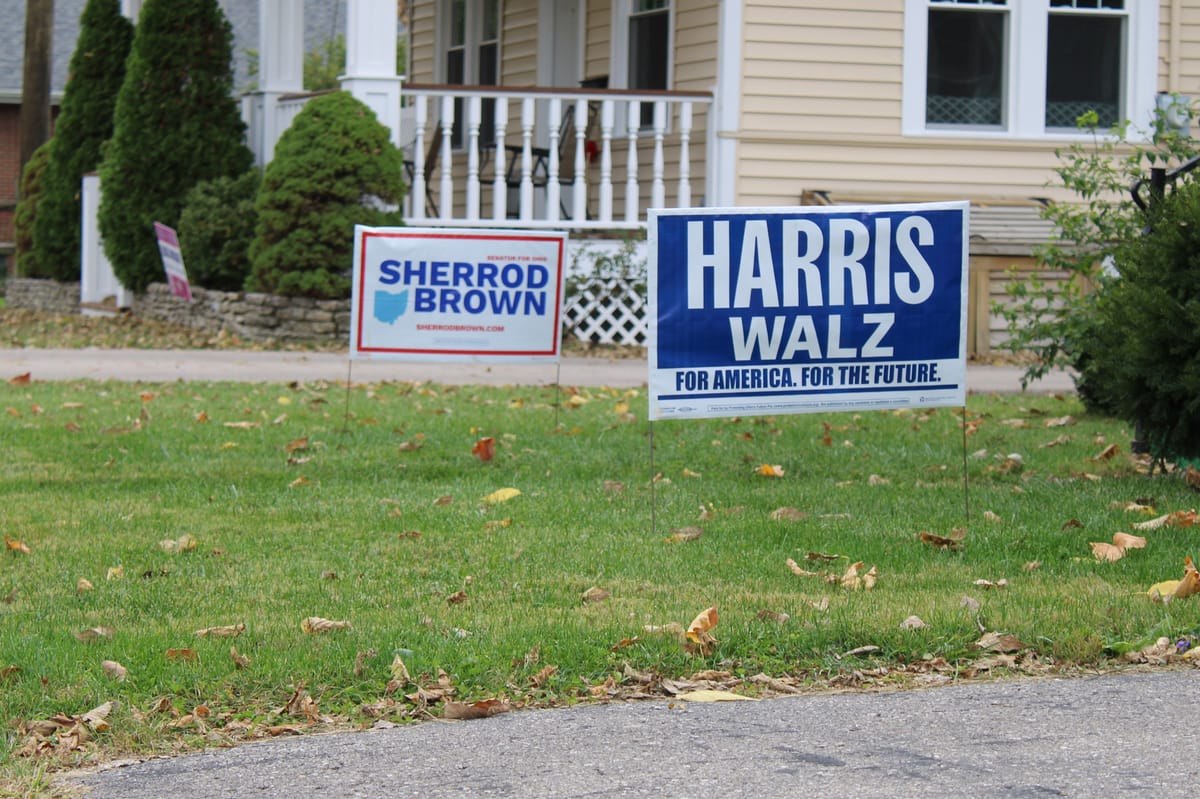Young Voters: Energized … and disillusioned
Oxford is a college town, and many students may be first-time voters. Columnist Richard Campbell writes that young voters make up one of the hardest demographics for candidates to reach.

I first voted in a presidential election in 1972. George McGovern was my guy. We lost.
I had wanted to vote in 1968, when I was 19, but that wasn’t possible. The voting age wasn’t lowered to 18 until the 26th Amendment was ratified in July 1971. An important argument worked back in those days: If 18-year-olds were old enough to fight and die in Vietnam, we were certainly old enough to vote.
In 1972, 55.4% of eligible 18- to 29-year-olds voted. It is a record that still stands, although the 18-29 group did hit the 55% mark again in 2020. Since 1971, the only other presidential elections where the youth cohort hit the 50% were in 1992 , when Clinton won his first term (52%), and in 2008 when Obama won his first term (51.1%). The youth vote helped elect both Democrats.
The low water mark came in 1996 when Clinton won a second term, with only 39.6% of eligible young voters showing up. Perhaps surprisingly, this was a couple years before the Monica Lewinsky scandal turned Clinton into a punchline for comedians.
What we know from the data is that the older you are, the more likely you are to vote. The 60+ crowd — a dependable block — votes consistently at the 70% level, creating an advantage for conservative politicians as voters in general tend to become more conservative as they age.
In a study of 24 countries, a 2020 New York Times survey found that youth voting increases where the percentage of voting across all age demographics is higher. “But before scolding young Americans,” the Times noted, “look at their elders. In countries where older people vote at higher rates, young people do too.”
For example, in Sweden nearly 90 percent of registered voters turned out in that country’s latest election, including 86 percent of the 18- to 29-year-olds. The U.S., on the other hand, was fifth from the bottom in the survey with an overall turnout of 64% in 2016 and a youth vote of 46%. Just a slight increase in younger voters that year might have helped Hilary Clinton to win the electoral college; she still won the popular vote against Donald Trump by nearly three million votes.
The usual suspect that older generations point to for the low turnout of young voters is apathy. But the Times studies and other research offer different reasons. One, voting is habit forming and develops over the years. Two, younger people in newer jobs can’t afford time off from work, and newer policies enacted by many state legislatures, such as outlawing same-day registration, make it harder to vote. Three, some young voters are too embarrassed to vote because they may not know the candidates and feel unqualified. Four, politics has grown nastier and more partisan, and younger voters opt out. They have experienced the whiplash effect of the eight years under the nation’s first Black president followed by the Trump presidency and an attempt to overturn the 2020 election.
New studies from UC Berkeley have found that “dysfunctional government is leaving millennial [born 19981-1996] and Gen Z [born 1997-2012] voters fatalistic,” according to a Berkeley News press release.
“Millennials and Gen Zers are generations unlike any other because of the risk they face,” says Erin Heys, policy director for the Berkeley Institute for Young Americans (BIFYA). These risks include economic inequality, climate change, and artificial intelligence. “Young people are feeling hopeless about the challenges in front of them, and are disillusioned with a political system that is unresponsive to their needs,” Heys reports.
Interestingly, young conservatives share these concerns. According to one of the Berkeley studies, “The values of young conservatives, in particular, are changing, with young conservatives more egalitarian and fatalistic in comparison to older cohorts of conservatives.” Heys notes that young conservatives “have been found to hold more liberal views on issues like racial equality, climate change, universal health care and abortion.” She reports, however, that young people in general “think that much of their lives is outside their control,” and they are “pessimistic about their own futures and the fate of the country.”
With fatalism now identified as one marker that may keep younger (and older) voters away from the polls, BIFYA’s executive director, Sarah Swanbeck, notes, “Candidates looking to engage with and inspire this group of young voters will need to provide an antidote to this sense of dread by offering real solutions.” We are certainly not getting any solutions in 30-second political ads.
A paradox is at work here. Young activists have driven social movements like Occupy Wall Street and Black Lives Matter. They have marched for reproductive rights and protested the war in the Middle East. Yet they feel demoralized by a gridlocked government that seems to have little interest in tackling serious issues and solving social problems.
But just maybe some of that youthful energy and activism can also be channeled into voting, overcoming fatalism and breaking through that 55.4% ceiling. As a high school and college teacher for more than 50 years, I put my hope in young people.
Richard Campbell is a professor emeritus and founding chair of the Department of Media, Journalism & Film at Miami. He is the board secretary for the Oxford Free Press.




